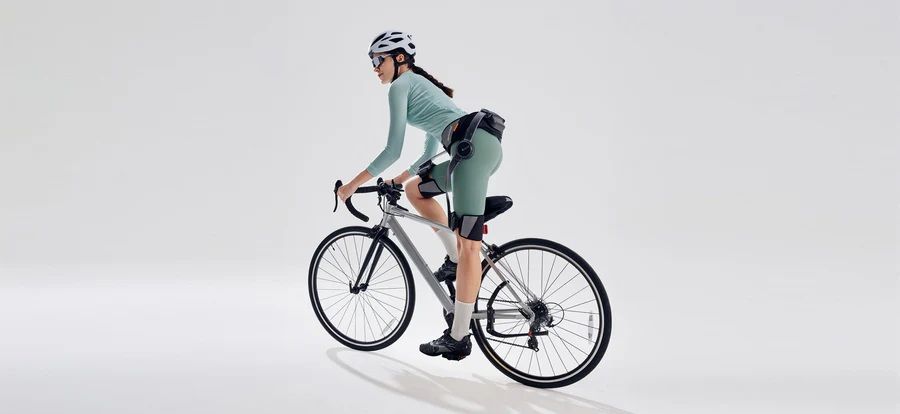As humans, so many things in life can remind us of how frail our flesh is. An injury, an accident, or just the humbling experience of trying to lift something heavy. So why not give yourself a little robotic boost?
Robotic exoskeletons have been a staple of sci-fi films like Aliens or Elysium, but for a long time you’d only find real examples in expensive military research programs or medical facilities. Now? You can buy one for yourself for less than you might expect!

Related
These Are the Robots (Maybe) Coming to Your House to Do Your Chores
The future is looking rather Rosie.
How Exoskeletons Work
There are a lot of different devices that fall under the category of “exoskeleton”, but they are all some form of external frame that supports your body. The point of these exoskeletons is to make you stronger, or to reduce the strain on your own body, or both. Exoskeletons can be powered, or they can be passive, using unpowered mechanical components to take the strain off your muscles and bones.
They can be big, hulking, sophisticated wearable robots, like the Sarcos Guardian XO seen here letting its operator lift a 120-pound aircraft wheel like it’s nothing.
The Sarcos line has been under development for many years now, and has obvious military and industrial applications. For example, navy staff using exoskeletons like these could load ammo and missiles onto fighter planes more quickly and efficiently.

Related
Meet the Robots That Could Save Your Life One Day
Could a robot save your life? From drones to robot dogs, these AI-powered heroes are changing the future of search and rescue.
A new generation of slim, barely-noticeable exoskeletons are also helping people expend less energy when, for example, hiking. Particularly when carrying heavy loads like backpacks. The DNSYS X1, for example, can significantly extend your range and take the strain off your body when walking up or down inclines.
While something like the Sarcos Guardian costs $100K a year to rent, according to a report by IEEE Spectrum, you can own an X1 for about $800.
Most of the exoskeletons available to the public, especially the powered variety, are only for your lower body, but there are some that can help with upper body strain too, without breaking the bank.
Exoskeletons for Under a Grand
So I’ve already highlighted the X1 above, but there are actually more than a few sub-$1000 options on the market as I write this, and I fully expect that as the technology that underpins these devices get cheaper, prices will go down while capabilities go up. Thanks to better batteries, smaller and more powerful motors, and more sophisticated computer brains to coordinate it all.

Related
The Hypershell Go X starts at $799 and offers 0.5HP and a roughly nine-mile range. The unit itself weighs about 4.4lbs, and you can, of course, bring multiple batteries with you.
Not only will this work as a way to increase your hiking range without wearing out your joints and muscles, you can even use it for cycling, effectively turning your bike into an electrically-assisted model.
The Go is the entry-level model, with the Pro X doubling up to a full horsepower at $999, and the Carbon X shaves 10% off the weight in exchange for an extra $499.
There are some low-tech solutions as well, such as textile exoskeleton suits that are basically flexible braces that help prevent injury for people who do a lot of heavy lifting.
More Expensive Options
It’s awesome that there are sub-$1000 options, but things really start to get interesting if you juice the budget a little. For example, the Hilti EXO-S will run you around $1,500.
This is not a powered exoskeleton, but instead a passive mechanical system that uses mechanical components to relieve the strain on your while doing overhead work, without impeding your movement.
The EXO-T-22 tool balancer is another wearable that shifts the weight of heavy tools to your hips rather than your arms. This system runs around $2,000, but I think the saved medical bills and fatigue downtime you save will probably pay for it in spades.
There’s also the Chairless Chair, which is perfect for people who work in factories, or who have to do a lot of squatting or standing. It’s a passive system that lets you seamlessly switch between sitting, standing, and walking.
Medical Exoskeletons
The exoskeletons I’ve mentioned above are affordable to regular people or to average companies that make money with physical human labor, but if you have medical insurance that’s amenable to it, there are advanced medical exoskeletons out there designed to help people rehabilitate, or to compensate for a permanent disability.
One of the best-known examples is the ReWalk Personal 6.0, which costs about $85,000 a unit. Which is why most people will likely need the help of medical insurance of some sort to get one. According to Lifeward, the first approved Medicare claim for a ReWalk exoskeleton was in 2024.
It’s designed for patients with spinal injuries so that they can move around a home with stairs, curbs, high shelves, and so on. Apart from letting paraplegics regain a significant amount of independence, the ReWalk also offers health benefits and mental health improvements.
I think we’re going to see a lot more exoskeleton usage in the health industry going forward, alongside advanced prostheses, but that price really does need to come down!
Whether you just need some extra pep in your step walking to work or school, or you want to save your joints for retirement, exoskeletons are here and they’re ready to help.





